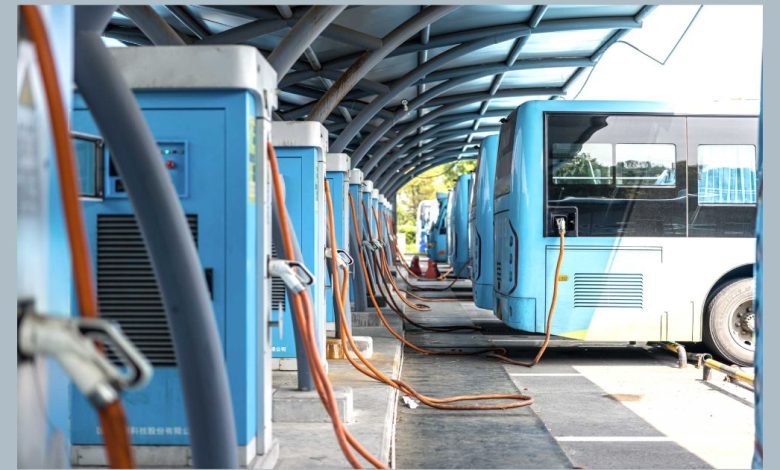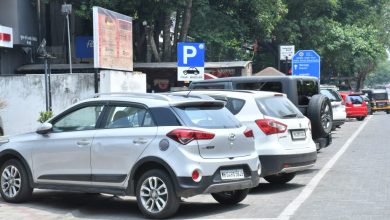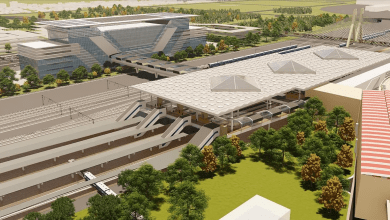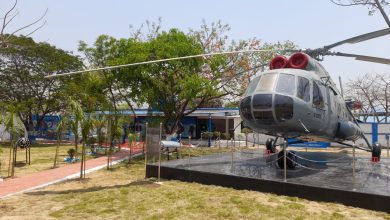Over 34% Electric Buses Standing Idle for Want of Charging Stations

Nagpur electric bus charging: As Nagpur strides towards achieving 100% eco-friendly public transport, a significant roadblock has emerged. Approximately 34% of the city’s electric buses remain idle due to a lack of sufficient charging stations. This issue poses a challenge to the city’s green ambitions and highlights a critical infrastructure gap.
Nagpur’s Electric Bus Fleet: An Overview
The Current Fleet
Nagpur Municipal Corporation (NMC) currently operates a mixed fleet of buses. Out of 622 buses, around 421 are operational, with 151 being electric buses. The city’s electric fleet includes both air-conditioned (AC) and non-AC buses, with a notable emphasis on providing a comfortable commute.
Deployment Statistics
The NMC has received 230 electric buses, yet only 151 are in service. Of these, 105 are AC buses. The Haryana-based PMI Electro Mobility Solutions Private Limited has delivered all 144 AC e-buses, but only 65 are currently operational, leaving 79 buses idle at the Wathoda depot.
Charging Infrastructure: The Bottleneck
Existing Charging Stations
At present, Nagpur’s transport department has set up charging facilities at four locations: Lakadganj, Morbhavan, Wadi, and Hingna. These stations can collectively support 151 e-buses.
Charging Capabilities
With a one-hour charge, an electric bus can travel approximately 130 kilometres. However, the limited number of charging points is a significant constraint, leading to underutilization of the fleet.
Impact on Commuters
Overcrowding Issues
The decommissioning of 132 out of 237 standard red buses has exacerbated the issue, resulting in overcrowded routes such as Hingna, Butibori, Wadi, Kamptee, and Pardi. Daily commuters, including Prajwal Mandawkar who travels between Nari and Butibori, have voiced their concerns over the lack of sufficient charging infrastructure.
Commuter Comfort
The underuse of AC electric buses has also impacted commuter comfort. These buses are designed to provide a more comfortable travel experience, which is currently compromised due to the charging station shortage.
Plans for Expansion
Wathoda Depot Development
To address this issue, PMI is developing a new depot in Wathoda, which will house 88 charging guns. This expansion aims to significantly boost the city’s charging capacity and bring more electric buses into operation.
Opportunity Charging Points
In addition to the Wathoda depot, opportunity charging points are being installed at Mor Bhavan and Khapri. These points allow for quick, mid-route charging, reducing the need for buses to return to the depot for recharging and thereby saving valuable operational time.
Environmental and Economic Benefits
Reducing Emissions
The shift to electric buses is a key part of Nagpur’s strategy to reduce its carbon footprint. Electric buses produce zero emissions, contributing significantly to cleaner air and a healthier environment.
Cost Savings
Electric buses are also more cost-effective in the long run compared to their diesel and CNG counterparts. They offer lower operational and maintenance costs, which can lead to significant savings for the city.
Challenges Ahead
Infrastructure Investment
Developing the necessary infrastructure requires substantial investment. The city must prioritize funding for charging stations to ensure the full utilization of its electric bus fleet.
Policy and Planning
Effective policy and strategic planning are crucial to overcome these challenges. The NMC needs to develop a comprehensive plan that includes both short-term and long-term goals for infrastructure development.
Public-Private Partnerships
Role of Private Companies
Private companies like PMI play a vital role in this transformation. Their involvement in developing charging infrastructure is essential for the timely deployment of electric buses.
Collaborative Efforts
Collaboration between the NMC and private enterprises can accelerate the infrastructure development process. Such partnerships can bring in the necessary expertise and financial support.
Technological Innovations
Advanced Charging Solutions
Investing in advanced charging technologies can enhance efficiency. Fast-charging stations and wireless charging options are potential solutions that can be explored.
Smart Grid Integration
Integrating smart grid technology can optimize the charging process, ensuring better management of energy resources and reducing downtime for buses.
Commuter Awareness and Education
Promoting Public Transport
Raising awareness about the benefits of electric buses can encourage more people to use public transport. Education campaigns can highlight the environmental and economic advantages.
Feedback Mechanisms
Implementing feedback mechanisms can help the NMC understand commuter needs and address issues promptly. Engaging with the public ensures that the services provided meet their expectations.
Future Prospects
Scaling Up Operations
With the expansion of charging infrastructure, Nagpur can scale up its electric bus operations. This will not only improve public transport but also contribute to the city’s sustainability goals.
Benchmark for Other Cities
Nagpur’s efforts can serve as a benchmark for other cities aiming to transition to eco-friendly public transport. Successful implementation can provide a model for others to follow.
Nagpur’s journey towards 100% eco-friendly public transport is commendable but fraught with challenges. The shortage of charging stations has rendered over 34% of the city’s electric buses idle, impacting both operations and commuter satisfaction. However, with ongoing efforts to develop charging infrastructure and the support of private companies, the city is poised to overcome these hurdles. Investment in infrastructure, policy planning, and technological innovations are key to unlocking the full potential of electric buses and ensuring a sustainable future for Nagpur.
1. Why are so many electric buses in Nagpur idle?
Many electric buses in Nagpur are idle due to a shortage of charging stations. This infrastructure gap prevents the full deployment of the city’s electric bus fleet.
2. What steps are being taken to improve charging infrastructure?
The NMC and PMI are developing new depots and opportunity charging points to expand the city’s charging capacity. This includes a major development at Wathoda with 88 charging guns.
3. How does the charging infrastructure impact commuters?
Insufficient charging infrastructure leads to fewer buses in operation, causing overcrowding and discomfort for commuters, especially on busy routes.
4. What are the environmental benefits of electric buses?
Electric buses produce zero emissions, contributing to cleaner air and reducing the city’s carbon footprint. They also offer long-term cost savings in terms of operational and maintenance costs.
5. What future plans does Nagpur have for its electric bus fleet?
Nagpur plans to scale up its electric bus operations with improved charging infrastructure. The city aims to set a benchmark for eco-friendly public transport, providing a model for other cities to follow.









